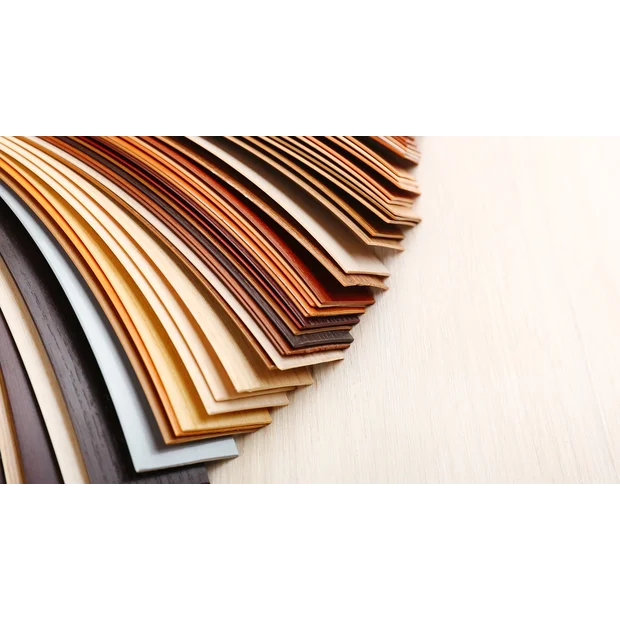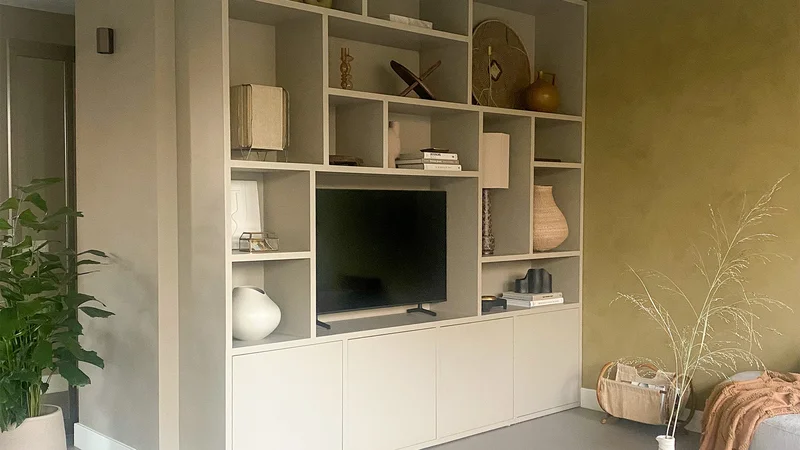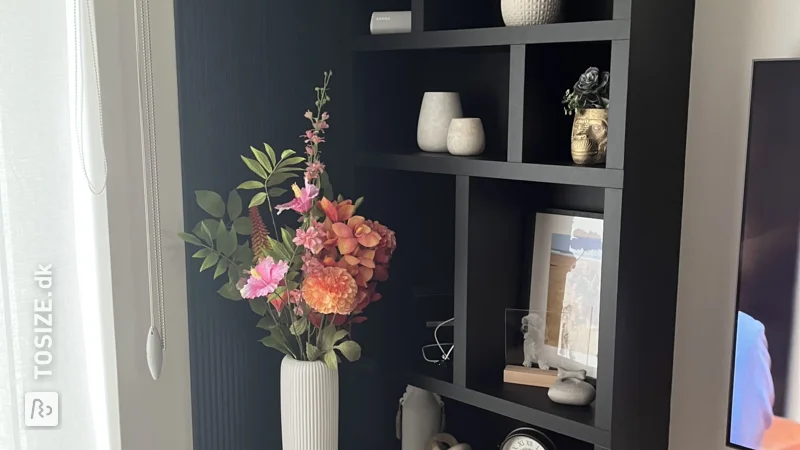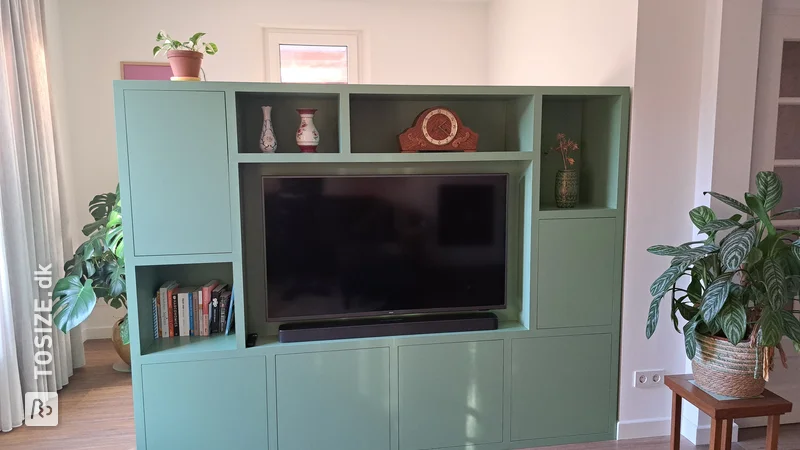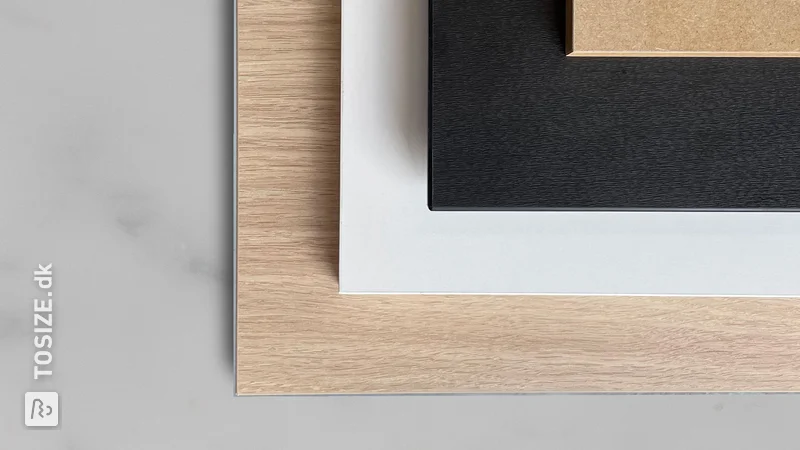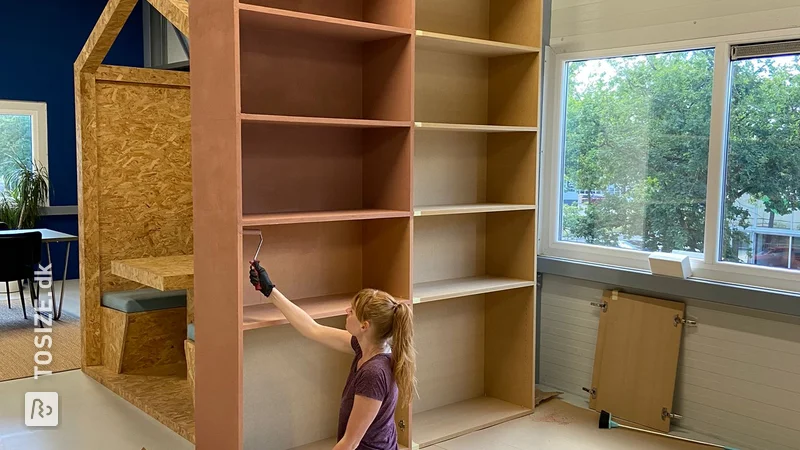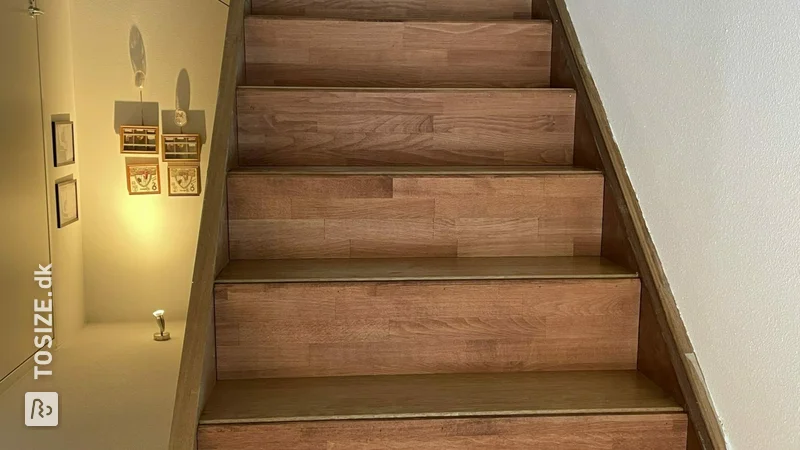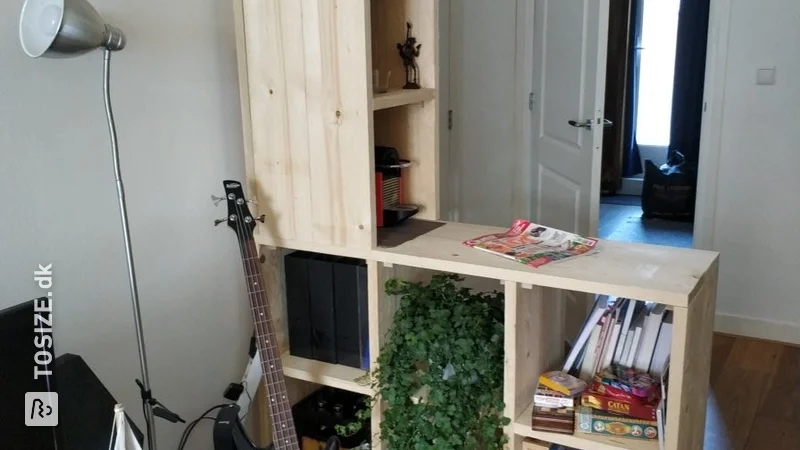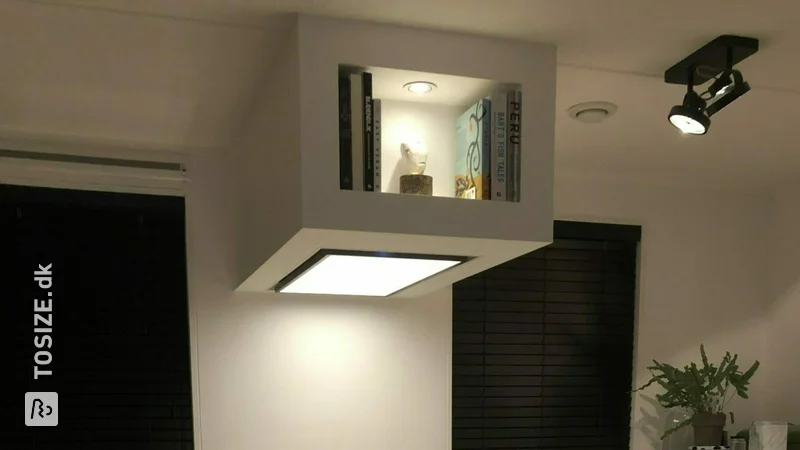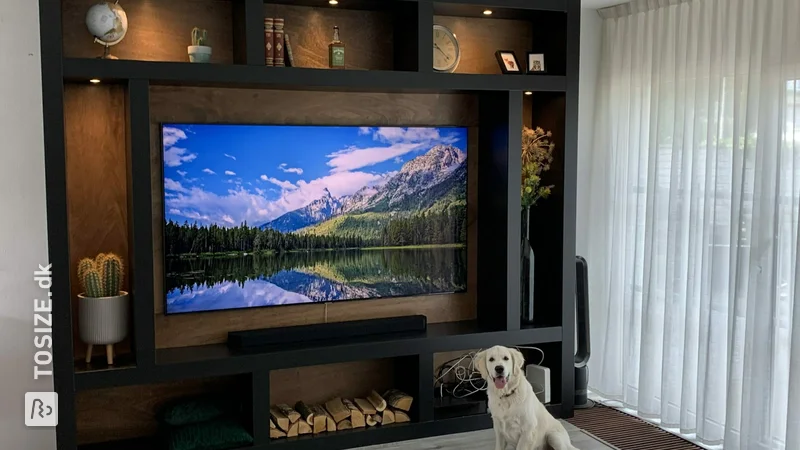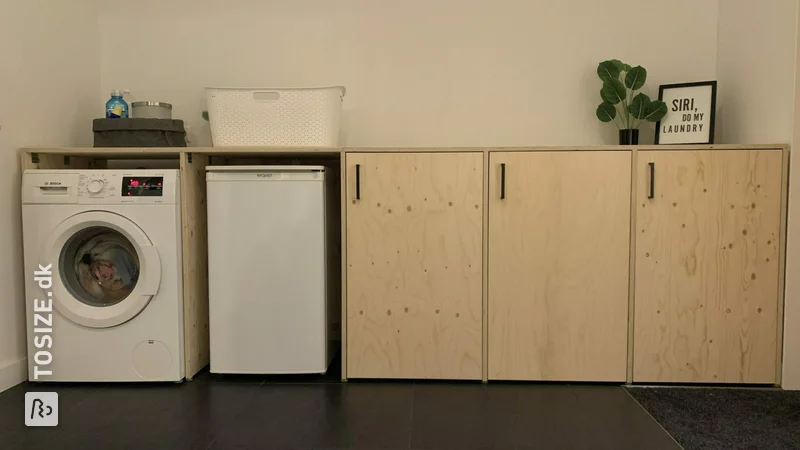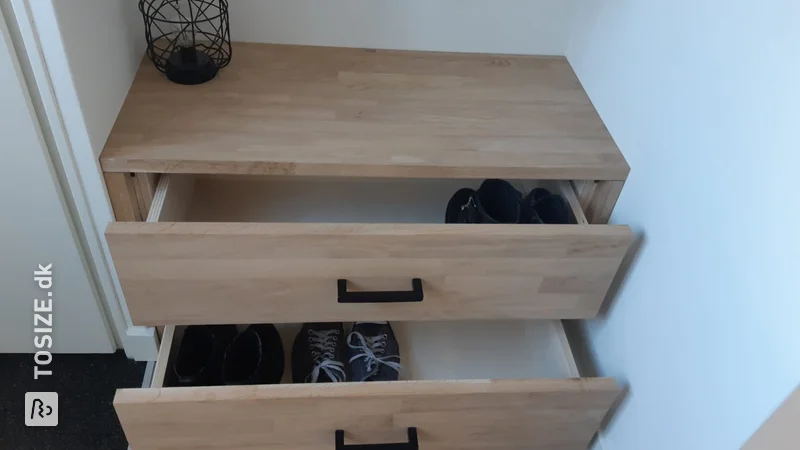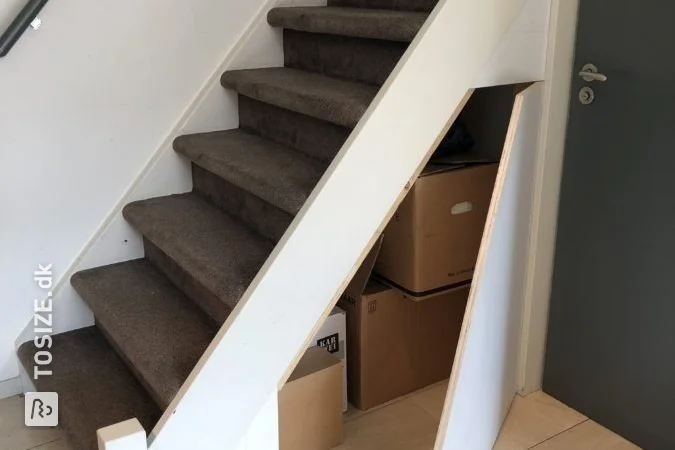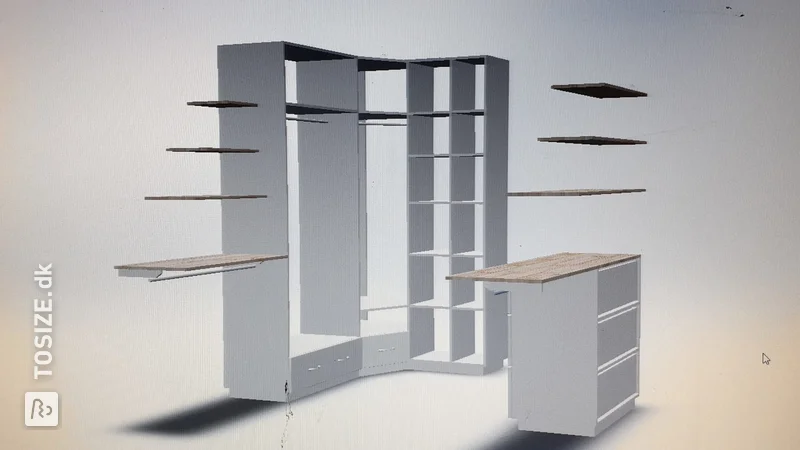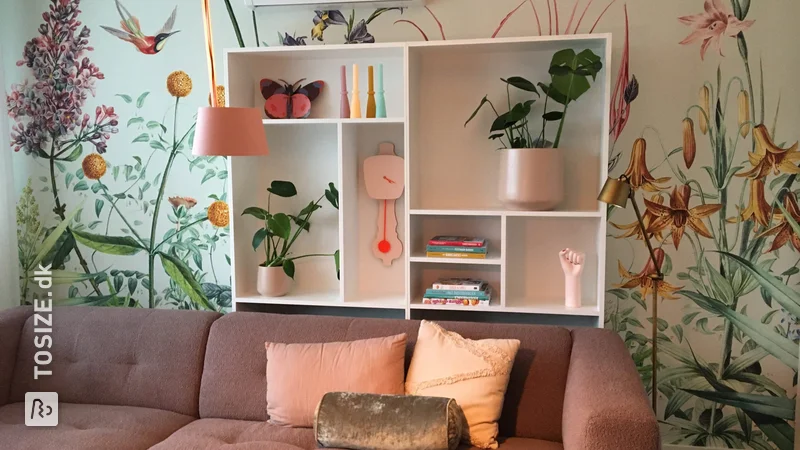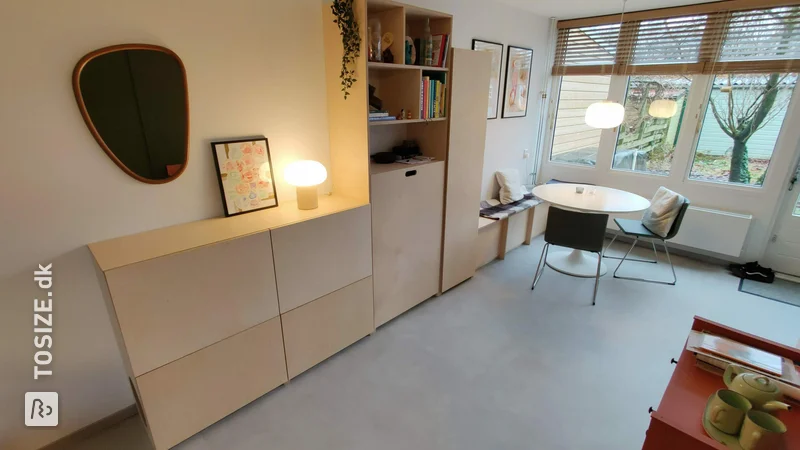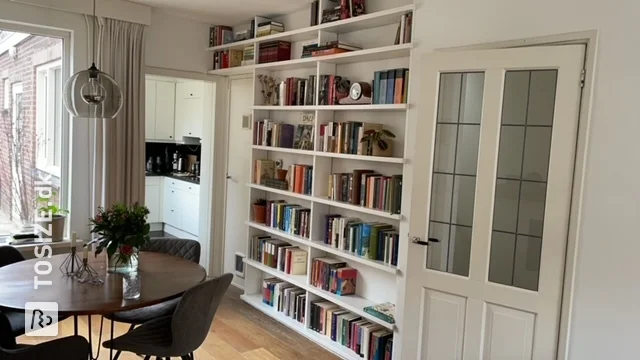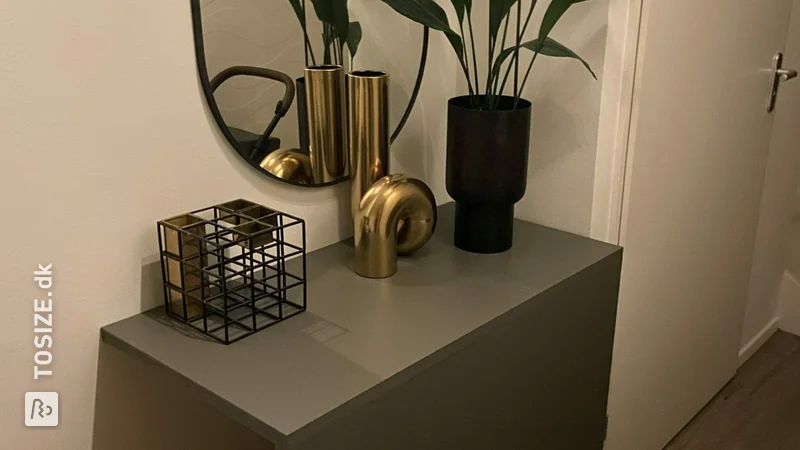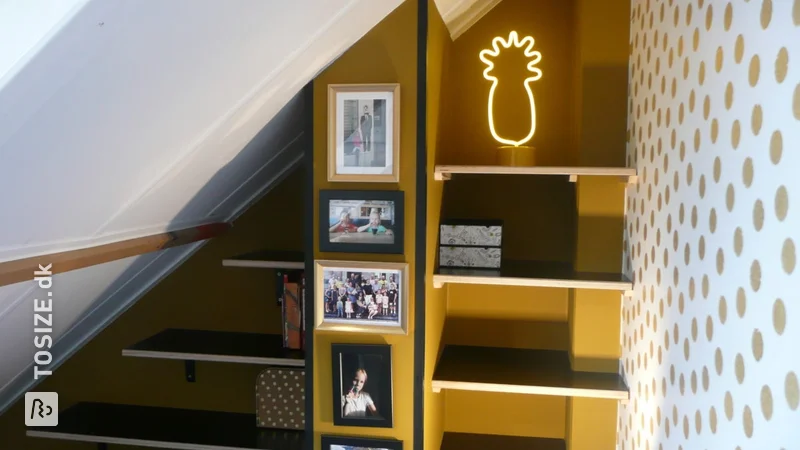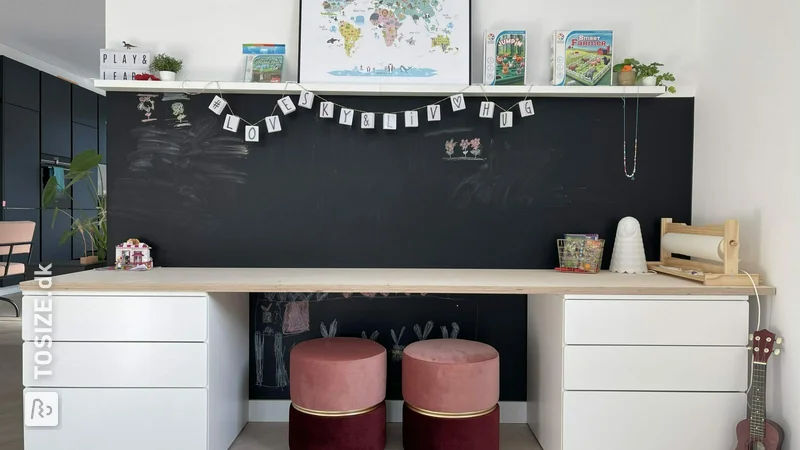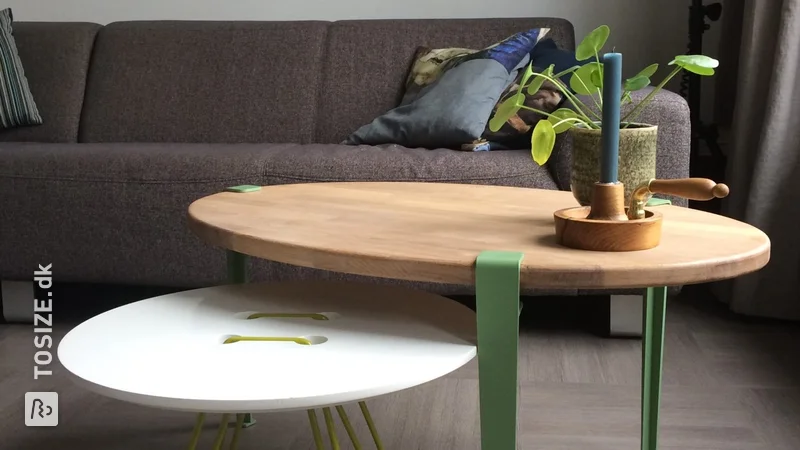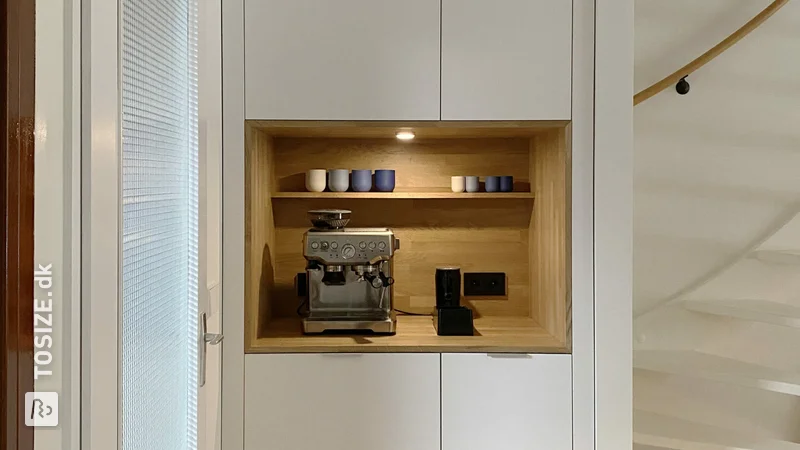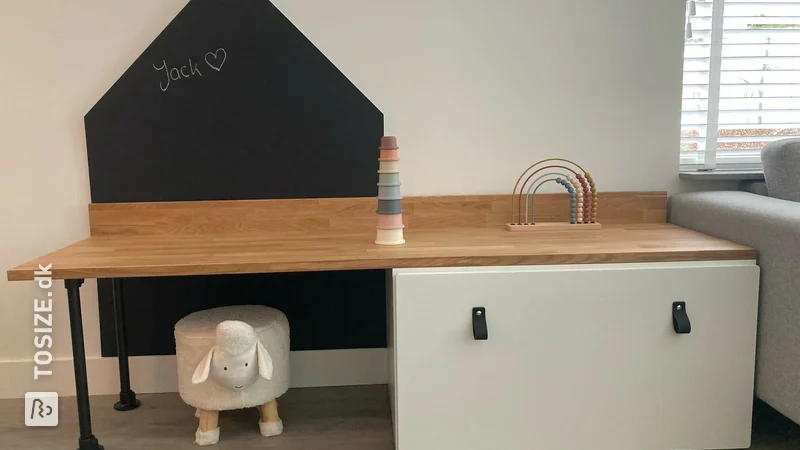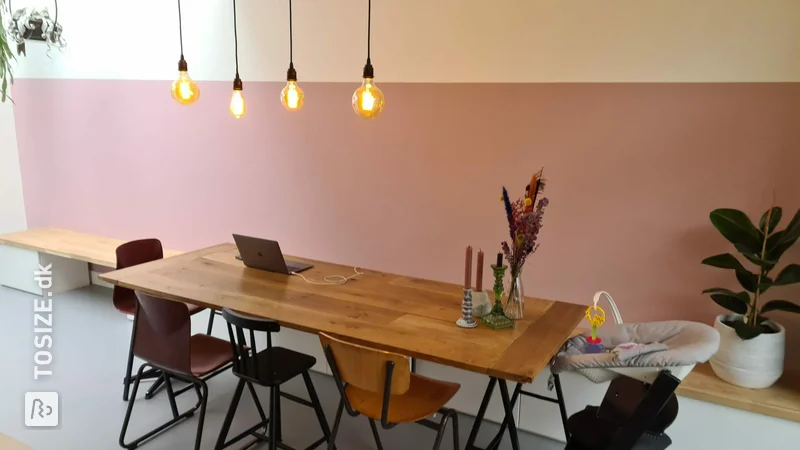Tailor-made desk top
In this article, we will tell you the best way to go about it.
How do you make your own custom desktop?
How nice that you are considering making your own custom-made desktop! This is a job that can easily be done by yourself with the help of our sawing service. In this article, we explain how best to go about it and what you need to bear in mind. Want inspiration from other handymen? Then check out the examples of MDF, oak, plywood and more in our blog.
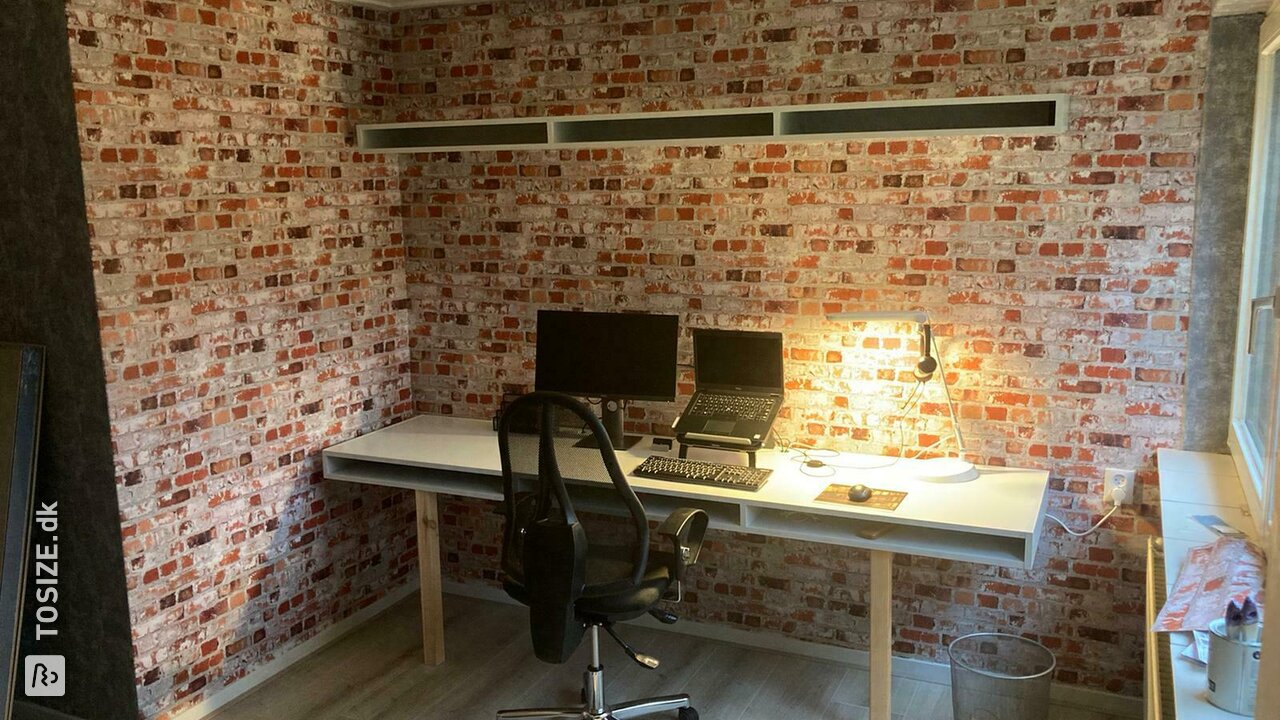
Read more in this article:
- In which room will you use your bespoke desktop?
- What do you need to customise a desktop?
- What size do you choose for your custom-made desktop?
- What thickness do you choose for a desktop?
- Which wood to use for your desktop?
- What is the right height of a desk-top?
- Which base will you choose for your custom-made desk top?
- Unique customised desktops
In which room will you use your bespoke desktop?
To start with, it is important to know where you are going to use your made-to-measure desk. Do you have an office space in mind or do you have a corner left over in the attic. Or in the kitchen close to the kitchen sink, for example. We also see that creating a (small) workspace in a bedroom is very popular. Because working from home is very popular lately, we see a lot of creative workspaces coming along in our blog.
What do you need to customise a desktop?
- A tape measure or measuring tape → to be able to determine the correct dimensions
- Correct (wood) screws → this depends on the type of base and the type of wood and thickness chosen
- A cordless drill → this allows you to pre-drill a screw hole and screw the screws into the top.
- (Wood glue) → In case of a top or underframe consisting of several sawn parts
Finishing the top yourself*?
- Sandpaper → Which grit and approach depends on the material and the finish to be chosen. Get good advice from the supplier of the lacquer or oil.
- Choose a beautiful and scratch-resistant lacquer or oil to finish your desktop to your liking.
*Note: with a desktop, it is nice if it does not reflect. So our advice is always to choose a matt finish.
What size do you choose for your custom-made desktop?
In offices and companies, a size of at least 120 centimetres wide, 80 centimetres deep is recommended. Naturally, there are also much larger desks. What is appropriate for you depends entirely on the space available and the purpose of your desk. The previously mentioned minimum dimensions for office desks have to do with the space needed to place one or more monitors at a sufficient distance. In addition, you obviously need space for a keyboard, a mouse and possibly a mouse pad.
What thickness do you choose for a new desktop?
When choosing the thickness of your desktop, there are 2 things to consider:
Dimensions
What is the size of your desktop and what is its load. The bigger the size and the more stuff you are going to place on it; the thicker the material is desirable. But not if you are going to support the entire top (by a standard base or a construction of pine beams, for example). For larger sizes of desks, we often see customers opting for oak or a construction sheet (layered board material; such as plywood).
Appearance
Not only the type of wood and finish determines the look of a made-to-measure desk. But also the thickness of the chosen top. We always recommend choosing at least 18 mm thickness. With a top of this thickness, support of the top is very important to prevent sagging. If in doubt, always err on the side of caution.
Which wood to use for your desktop?
Below, we discuss advantages and disadvantages of different sheet materials you can use for a custom-made desktop. All sheet materials are available in different thicknesses.
MDF
Pros:
- An affordable wood species
- Easy to process
- Good to paint
cons:
- Greater risk of deflection
Oak
Pros:
- A very solid wood species
cons:
- Specific appearance
- Solid wood species are pricier compared to construction sheet materials
Plywood
Pros:
- A solid construction plate
- Easy to paint for desired look
cons:
- The plate is composed of layers; these often remain visible
What is the right height of a desk?
Determining the right height for your desk is important for ultimately working comfortably. And for having a good sitting posture.
An average height of a non-height-adjustable base combined with a desktop is often 75.0 centimetres. This is the perfect height for people with a body height of 180.0 to 185.0 centimetres.
Are you a bit shorter; say 160.0 centimetres then a height of 66.0 centimetres is perfect. Are you a lot taller? If you are 200.0 centimetres, we recommend a desktop height of 82.0 centimetres.
If you have a non-average height and want to use a standard base, our advice would be to always choose a height-adjustable base. A height-adjustable base is also very practical if several people are going to use the workstation. This way, everyone can adjust their own workplace. A height-adjustable desk should be adjustable between 65.0 and 125.0 centimetres.
As you read, the underframe affects the height of your customised desktop.
Which base will you choose for your custom-made desktop?
If you are going to customise your own desktop, you have the following options in terms of base.
You make the chassis yourself
This is the most fun and the most difficult option, but with a little technical insight, perseverance and our sawing service, it will work. See here also several examples of homemade bases combined with a desk top on make. Making a desk top and base yourself is also popular for making a custom-made children's desk or playcorner.
If you choose to make a desk all by yourself, it is important that you make a good solid base. And that you also use the right materials for this. Are you going to make a large desk with a relatively large span? Then choose a sturdy and thick material for the top; for example birch plywood or oak. Always make sure the top is well supported. This can often be done with pine beams as a supporting structure. You can, for example, fix these well into the wall and then rest the top on the pine beams (provided the walls are suitable for this, of course). If you make a small desk, for example in a recess in a bedroom, you could also use MDF for the top. Even then, it is important to ensure good support.
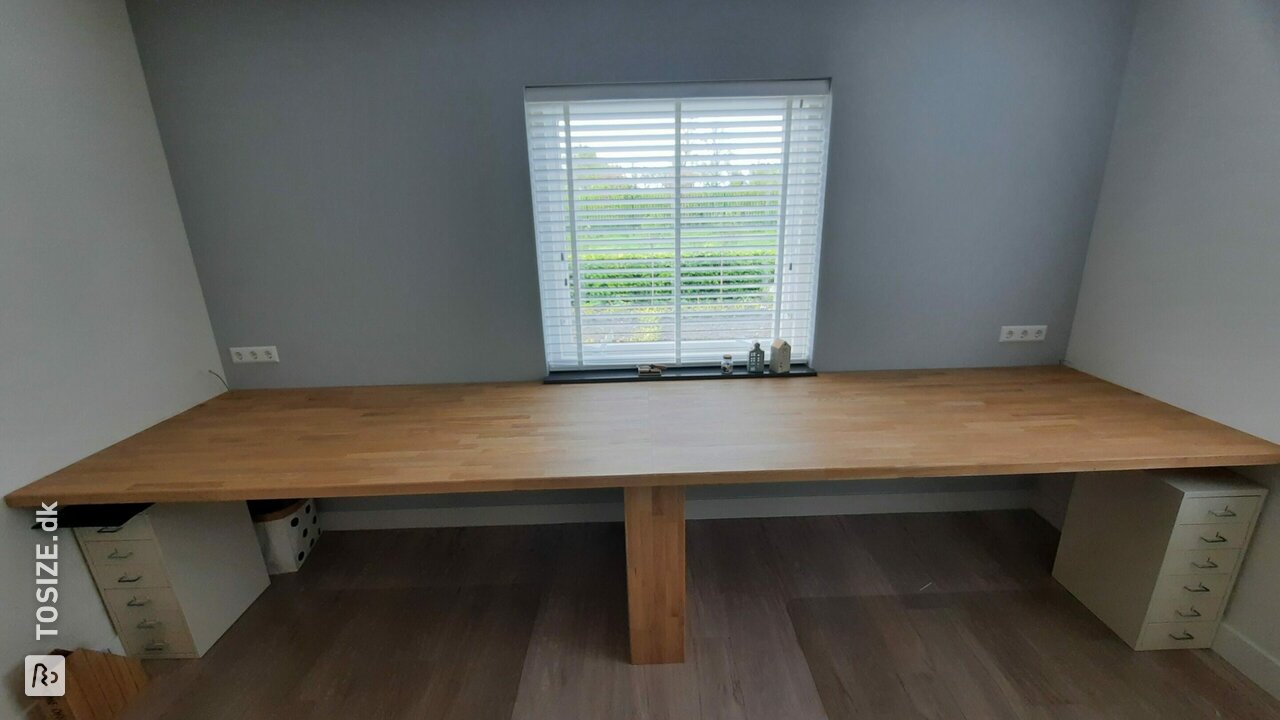

You use a fixed chassis
By far the most projects we see with clients is that they use a fixed undercarriage. It is often the case that the base is still good and can be reused. And that clients create a new look-and-feel with a new customised desktop. In the blog, we see all kinds of unique bases and workstations come by.
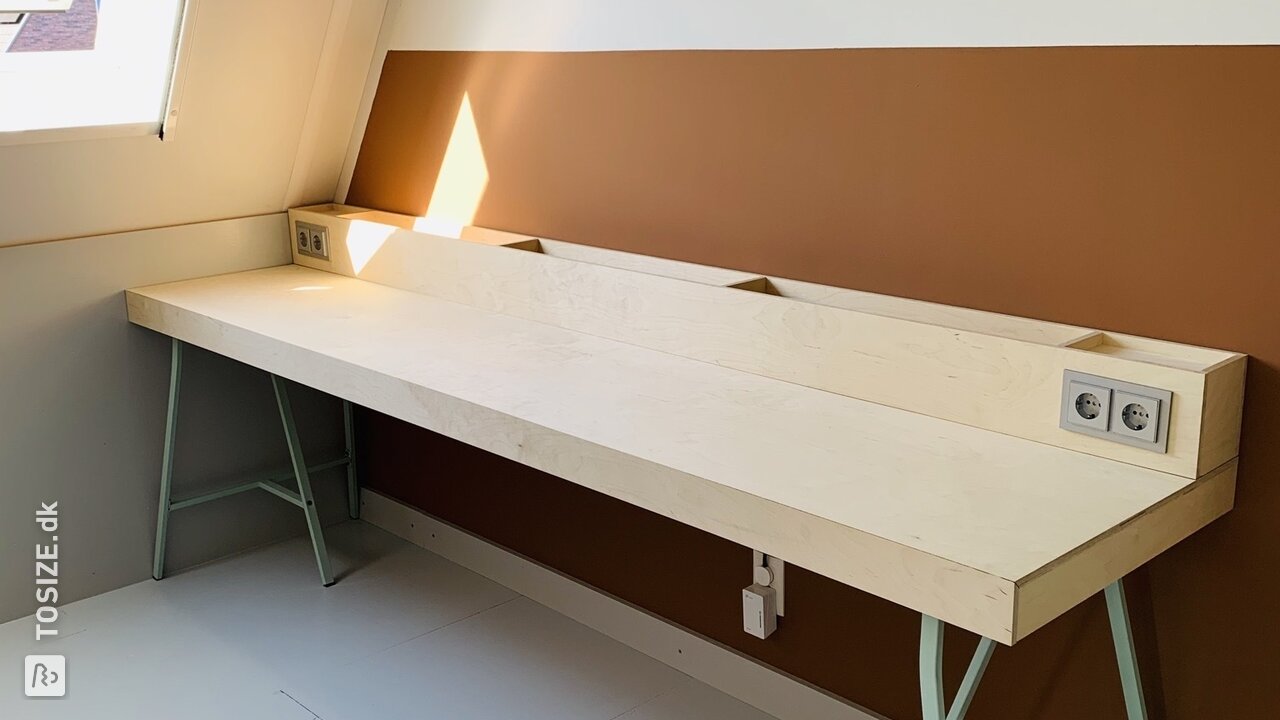
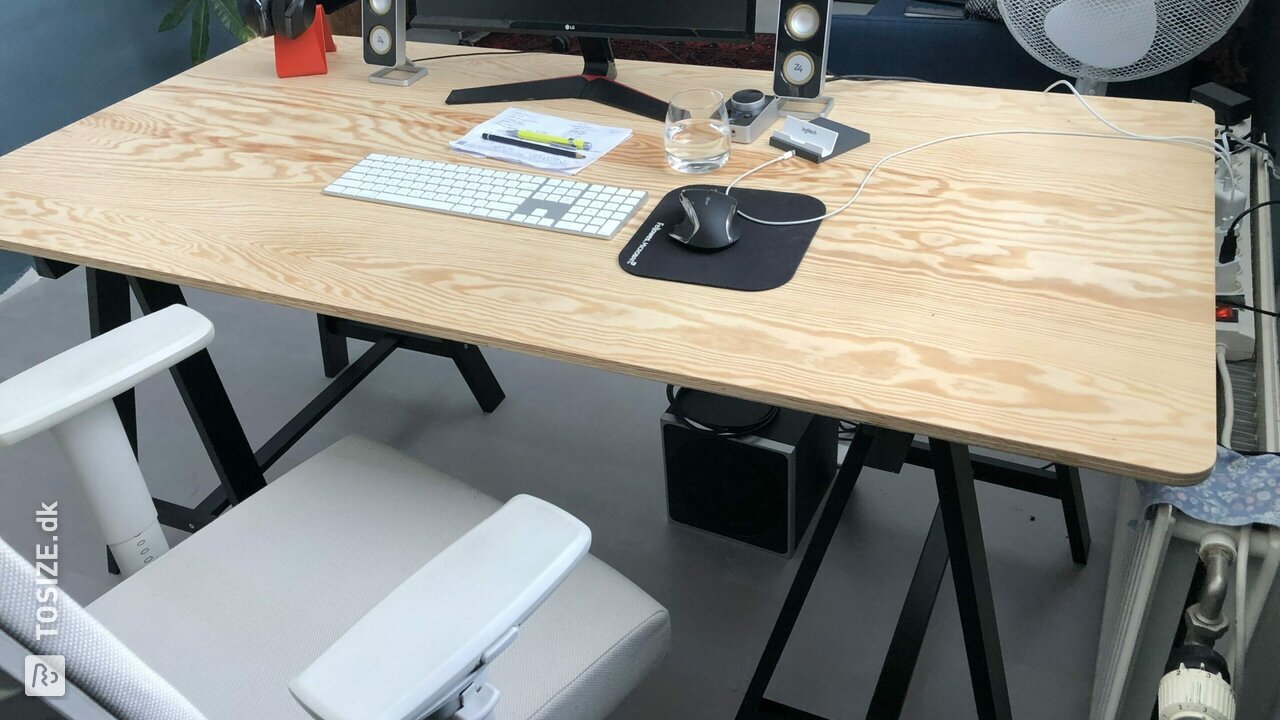
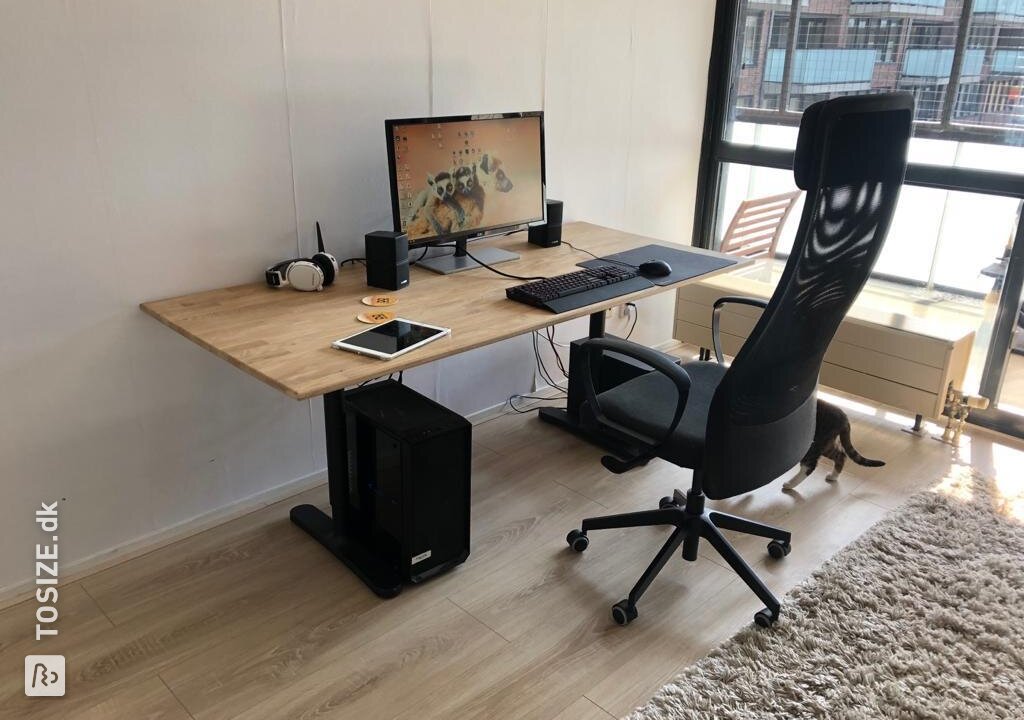
You use a height-adjustable undercarriage
If you are going to use the workstation with several people, this might be the best choice. Or if you like to work standing up from time to time. There are many different suppliers of height-adjustable bases. You can choose from manual adjustment or electric. The big Swedish department store has a wide selection of height-adjustable bases.
See what others have made before here
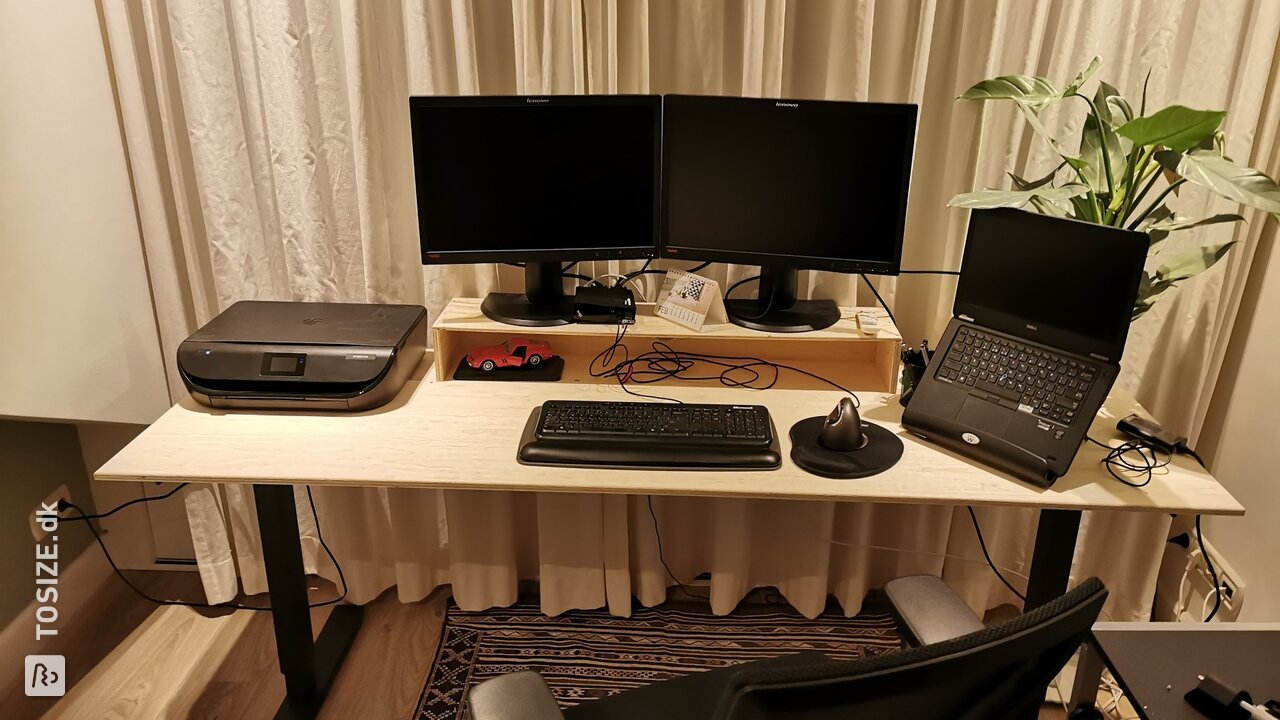
Unique customised desk tops
Below, we show some more unique custom-made home-made desks.
Wessel has created a combination of a music studio and a workspace at home. In a clever way, he has incorporated his piano into a revolving desk. Read Wessel's whole story here.
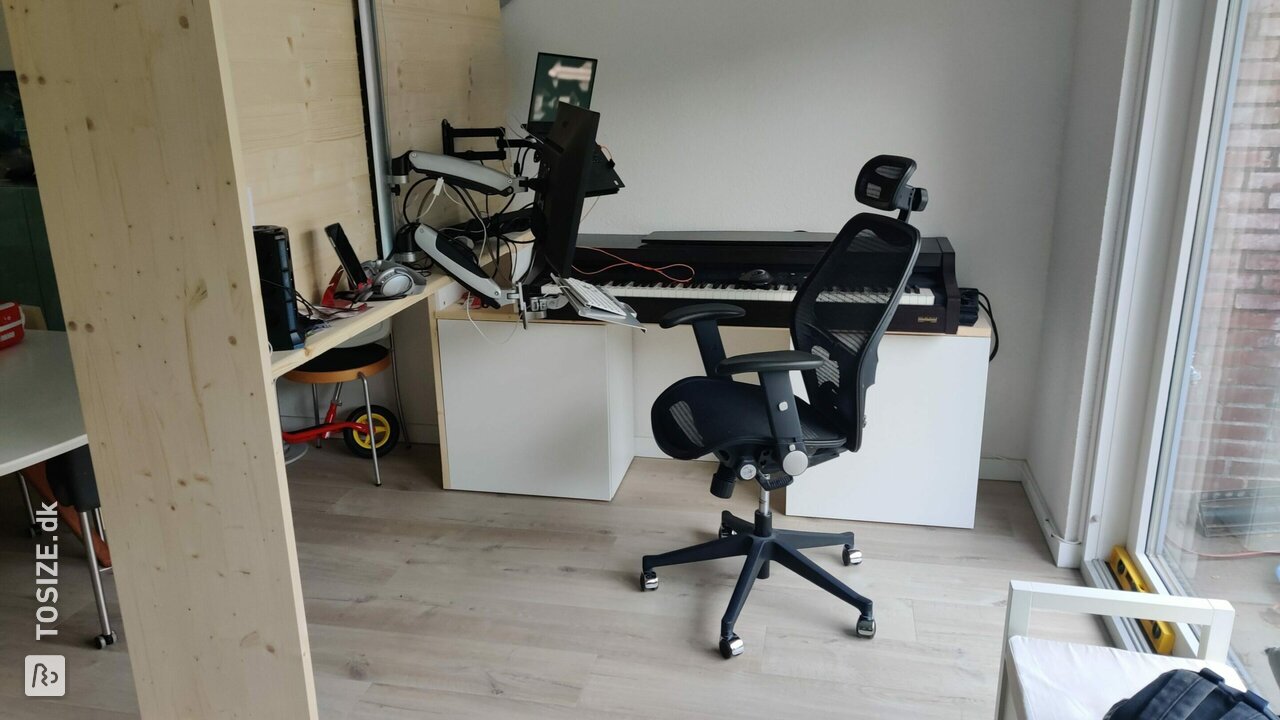
Mieke has created a simple but beautiful plywood birch desk. Using TIPTOE's special legs, she created a beautiful workstation in no time.
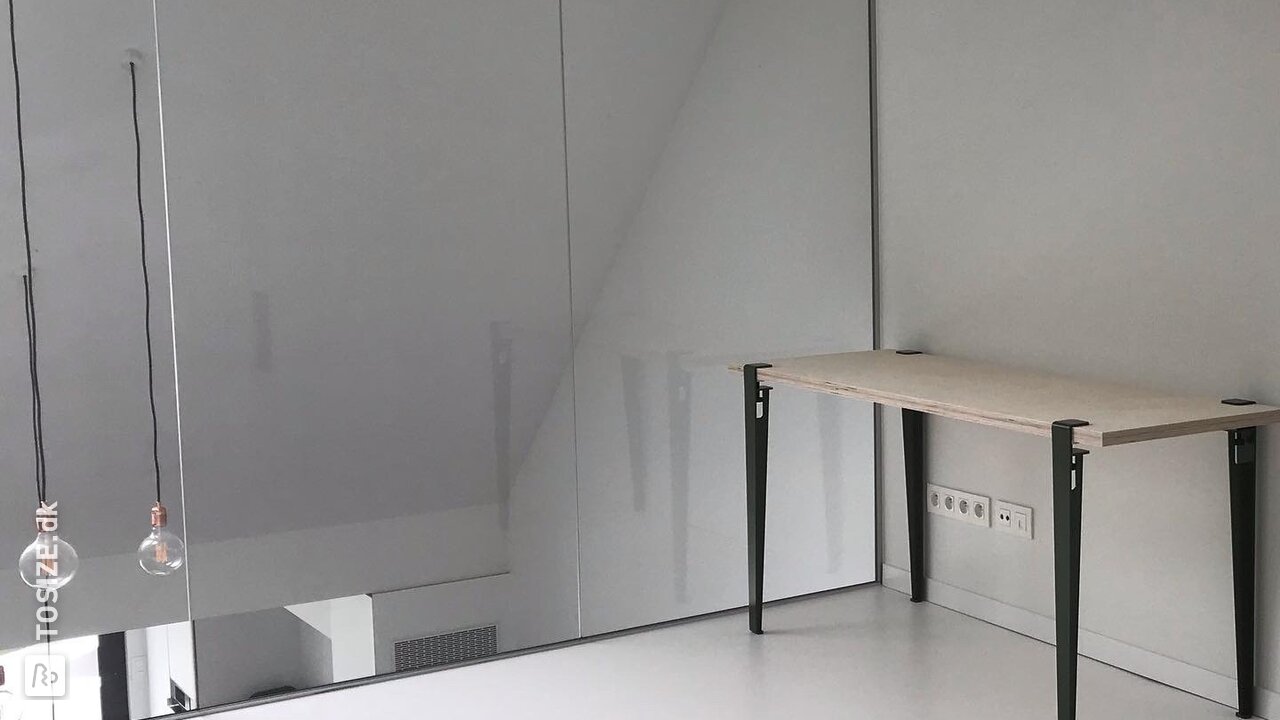
Frank used old wine crates as drawers combined with pine joinery panels to create a truly unique and small desk.
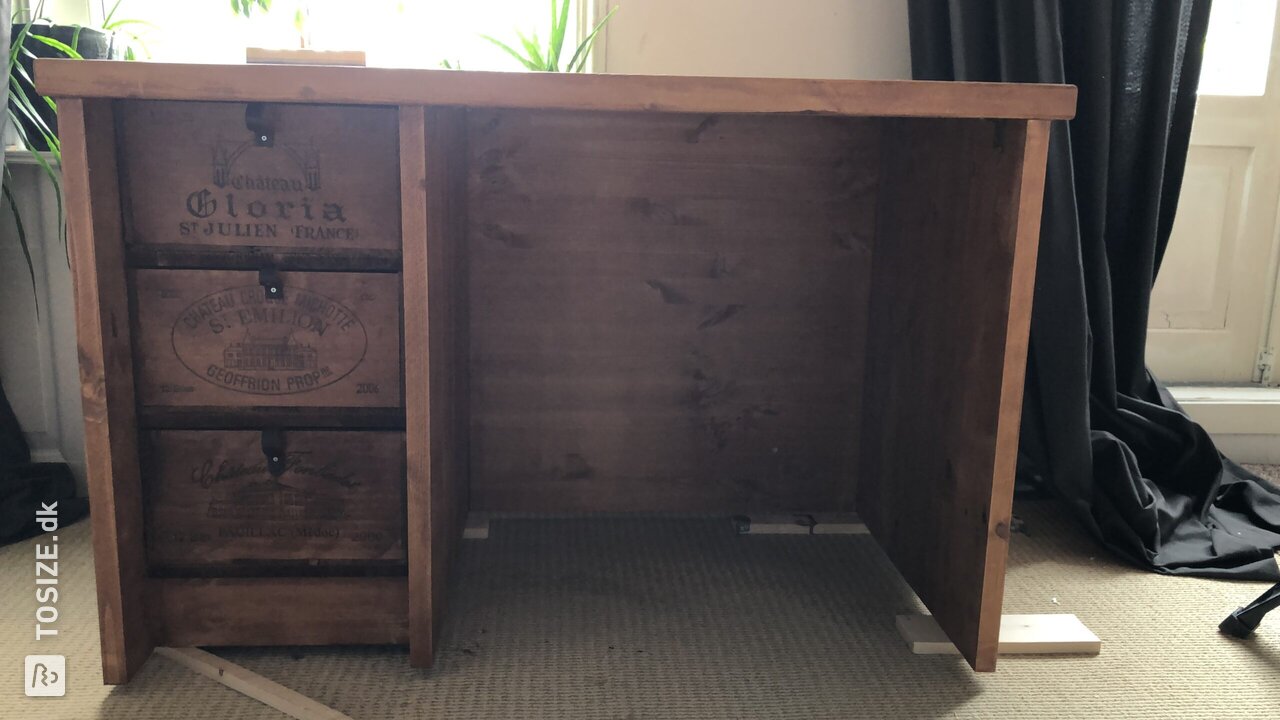
Has this article given you inspiration to get started with a custom-made desktop yourself?


